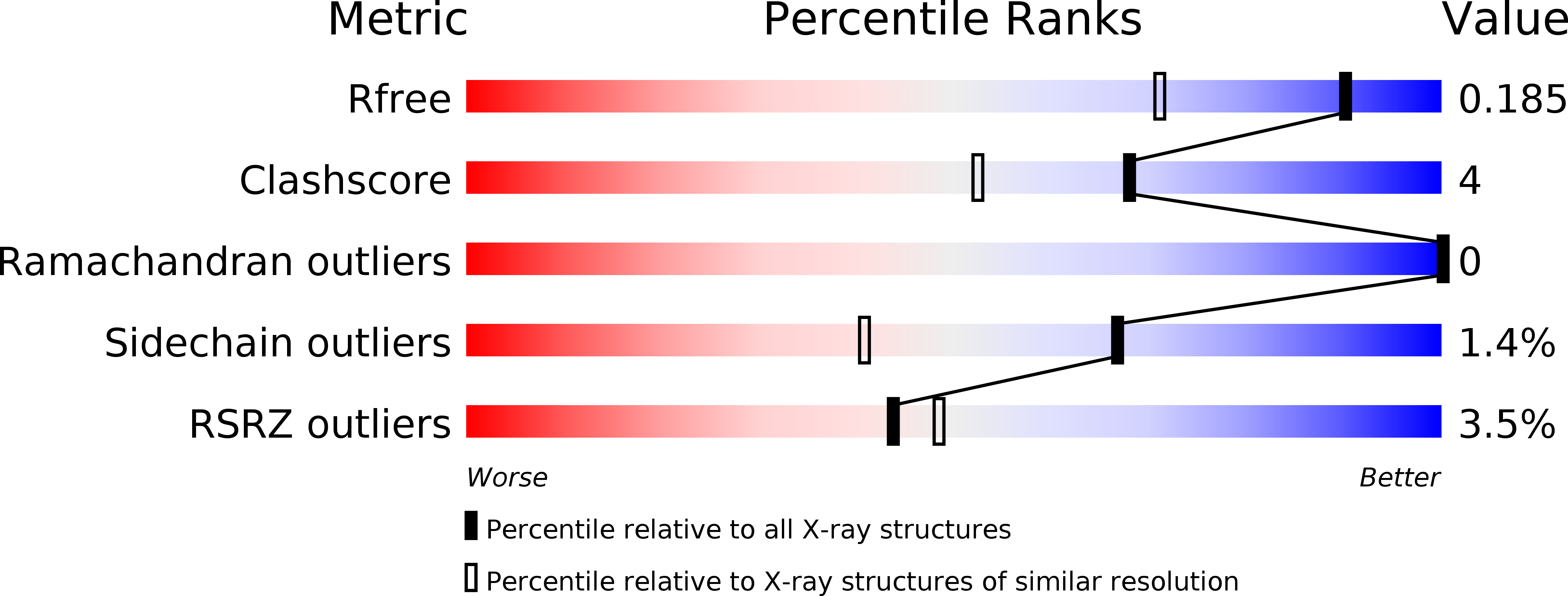Plant photoreceptors and their signaling components compete for COP1 binding via VP peptide motifs.
Lau, K., Podolec, R., Chappuis, R., Ulm, R., Hothorn, M.(2019) EMBO J 38: e102140-e102140
- PubMed: 31304983
- DOI: https://doi.org/10.15252/embj.2019102140
- Primary Citation of Related Structures:
6QTO, 6QTQ, 6QTR, 6QTS, 6QTT, 6QTU, 6QTV, 6QTW, 6QTX - PubMed Abstract:
Plants sense different parts of the sun's light spectrum using distinct photoreceptors, which signal through the E3 ubiquitin ligase COP1. Here, we analyze why many COP1-interacting transcription factors and photoreceptors harbor sequence-divergent Val-Pro (VP) motifs that bind COP1 with different binding affinities. Crystal structures of the VP motifs of the UV-B photoreceptor UVR8 and the transcription factor HY5 in complex with COP1, quantitative binding assays, and reverse genetic experiments together suggest that UVR8 and HY5 compete for COP1. Photoactivation of UVR8 leads to high-affinity cooperative binding of its VP motif and its photosensing core to COP1, preventing COP1 binding to its substrate HY5. UVR8-VP motif chimeras suggest that UV-B signaling specificity resides in the UVR8 photoreceptor core. Different COP1-VP peptide motif complexes highlight sequence fingerprints required for COP1 targeting. The blue-light photoreceptors CRY1 and CRY2 also compete with transcription factors for COP1 binding using similar VP motifs. Thus, our work reveals that different photoreceptors and their signaling components compete for COP1 via a conserved mechanism to control different light signaling cascades.
Organizational Affiliation:
Department of Botany and Plant Biology, Section of Biology, Faculty of Sciences, University of Geneva, Geneva, Switzerland.


















